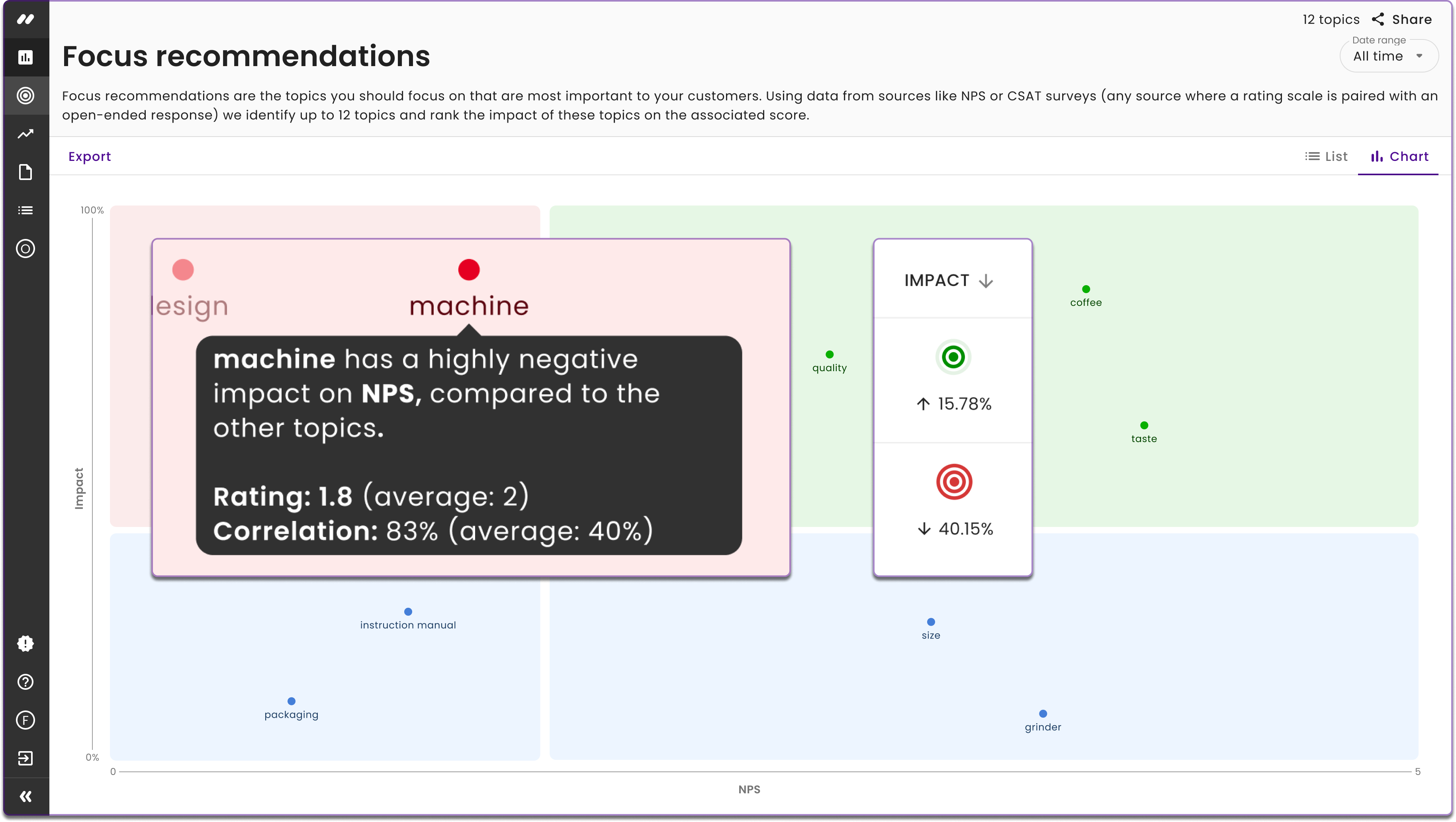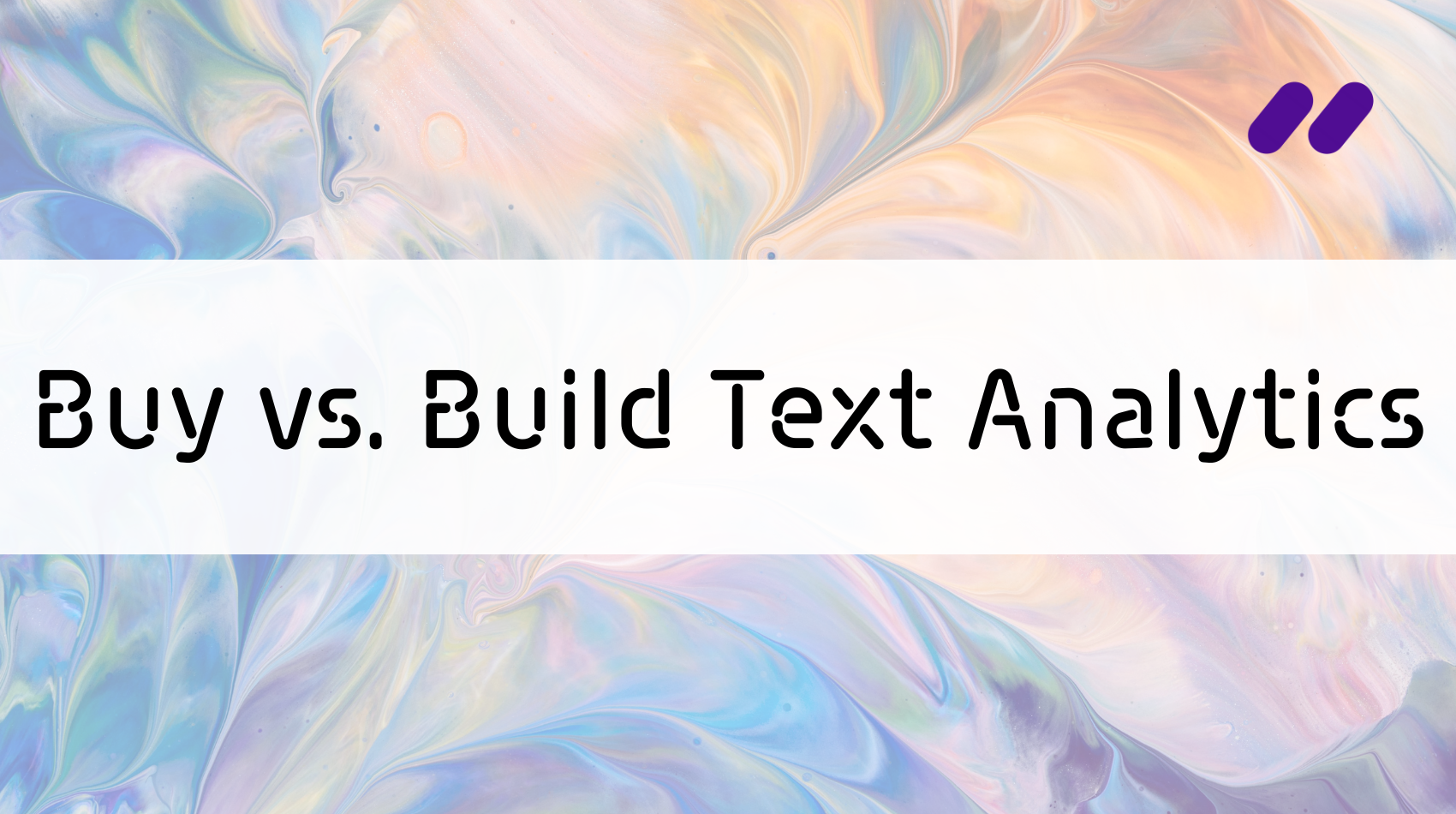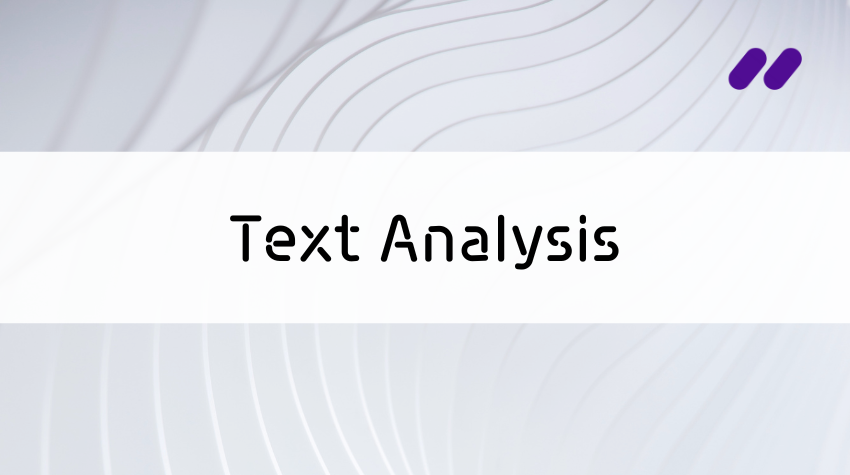When it comes to software, the buy vs. build debate is pretty ubiquitous – and it will likely stay this way for a while. Even for large industries like CRM software, many businesses still wonder about the costs, resources, payoffs, and outcomes of how they approach this fundamental question.
It’s no surprise that the challenge of buy vs. build is equally critical to text analytics software. But without understanding what goes into a text analytics software, it can be difficult to assess which approach is best for your business.
1. The pros and cons of buy vs. build
Without understanding what goes into a text analytics software, it can be difficult to assess which approach is best for your business.
The big question companies have when it comes to text analytics is always: should you build your own solution in-house or buy a solution from a vendor?
Nowadays, with the proliferation of the software as a service (SaaS) industry, software solutions can be deployed much more efficiently than in the past.
Building a solution internally involves years of work as your team researches, builds, and trains the model to accurately identify customer sentiment. It’s doable, but it’s hardly a seamless or user friendly process, especially for businesses that don’t have the extensive resources needed to support such an endeavor.
On the other hand, third party SaaS solutions that use AI and NLP are readily available. Fortunately, you don’t need to know the inner workings of any of these solutions to get set up and start making a difference with a strong ROI.
With a solid understanding of what you need out of your solution, you’ll be ready to take the next step.
2. What to consider to get your executive buy-in
Building a solution internally is doable, but it’s hardly a seamless or user friendly process, especially for businesses that don’t have the extensive resources needed to support such an endeavor.
You need a game plan to bring to the executive level in order to get that all-important signoff on whichever path you’re taking – buy or build. But what should you really include in this?
For something like a text analytics software, you’ll have to go a bit deeper than simply hoping to improve customer experience. Here are the points we recommend thinking about while polishing your game plan:
- KPIs to improve on top of CX: This could be your NPS score, star rating, or response time on your help desk. Define a specific goal in order to understand what data channels you need to analyze and how you will measure the performance and ROI of your solution.
- Data channels you need to analyze: Consider what sources of customer data are available for your analysis, like surveys or call transcripts. Based on the goal you define, you might include data from multiple sources. Your text analytics solution will have to support multichannel analysis in this case.
- Integrations with your tech stack: Especially with multiple data sources, think about how data will flow into your text analytics software. Manually exporting and importing data is not the most efficient process. Native integrations through APIs are ideal for robust and real-time analysis.
- Internal resources at your company: If you’re choosing build over buy for your text analytics solution, take into account the developers in your teams and their experience with AI. In order to get executive buy-in, you’ll need to justify the efforts (time and money) to build your proposed in-house solution.
- The cost of organizational change: The biggest obstacle businesses face is lack of adoption. It’s extremely important to test your potential solution in your organization with a free trial or proof of concept, to assess if your end users are comfortable incorporating it into their workflows.
- Budget costs of buy vs. build: A huge oversight when building text analytics in-house is thinking that your software is a static instance. A small script does not scale into a full text analytics solution, in fact, it has to evolve over time with your business assuming the maintenance costs.
3. Questions to ask a text analytics software provider
Text analytics platforms have big differences in advanced feature offerings like AI-based recommendations, richness of sentiment, and setup time.
Most text analytics solutions provide the same core functionality like positive, negative, or neutral sentiment, and some level of reporting and data visualization.
However, there are big differences in advanced feature offerings like AI-based recommendations, richness of sentiment like questions and suggestions, and setup time.
Consider the following questions when choosing a text analytics software provider in order to understand the quality of the advanced feature offerings.
- What is the setup process? The less time it takes to get to insights, the smoother the experience is for your organization. Solutions like Keatext work out of the box, being deployed on the cloud and leveraging industry agnostic AI. However, some platforms require you to train the AI model for your industry.
- Does it provide recommendations? Predictive analytics is a key differentiator among text analytics platforms. Ask if the software provides AI-based recommendations that enable your team to prioritize actions that have the most impact on NPS or CSAT.
- What integrations are available? Create a list of platforms you use at your organization with customer data you want to analyze – like Salesforce, ServiceNow, Surveymonkey, or Zendesk. Ask about how the solution integrates with and imports data from these platforms.
- Can multiple teams work with it? Are insights available in a centralized dashboard that everyone can access? Can dashboards be segmented for different teams? You want to avoid siloing your data by making it visible and accessible to relevant stakeholders.
- Does it identify customer intent? Sentiment analysis that also identifies customer intent is a powerful asset for your business. Assess how the solution categorizes sentiment. Does it include customer questions and suggestions? These categories help you better understand what customers are asking from you.
4. Deploying Keatext’s cloud-based solution
How does Keatext stack up to the questions and advice in this article? Well, we built a text analytics platform from the ground up that truly focuses on impact. Choosing Keatext enables your business to:
- Get recommendations for top action items with the most impact on customer experience metrics like CSAT or NPS
- Fully understand every step of your customer journey, on one dashboard, with multichannel insights from reviews, surveys, chats, calls, and support tickets
- Reduce your analysis time by 98% with our cloud-based solution that requires no out-of-the-box setup
- Seamlessly integrate your tech stack such as Zendesk, Salesforce, Intercom, and Surveymonkey
- Create, customize, and share dashboards internally or publicly with one click


Your most impactful customer experience improvements start with Keatext. Keep learning about what we do on our Learning Hub or check out our platform to see how you can start your text analytics journey with us!





